#extra fine merino
Explore tagged Tumblr posts
Text
Experiments with Mohair + FO: Friends Ear Warmer
Good Morning, Crafters! In my fiber crafts learning journey this week, I made my first finished object using a merino wool, held together with mohair. It seems that crafters are either a fan of mohair or dislike mohair, and I haven't seen anyone in between. So I figured it was time to figure out where I stood in this equation.
A couple of months ago I picked up some colorways in the relatively new Hobbii "Friends" Collection, the idea behind this product line being that you can mix and match the exact colorways across multiple fibers and weights. I think this is an excellent idea to create a line with varied, but reliable colors, and very well has the potential to be a staple when wanting to use a base of solids. There's cottons, kid silk, wool, a cotton and acrylic blend, and extra fine merino for all your fiber fun needs.
As I mentioned, I chose the extra fine merino and kid silk (79) - it will be the same across all fibers, which is also a nice feature and makes my organized brain all happy - also known as "Open Sea." Find the yarn here: Kid Silk, Extra Fine Merino Find the Friends Collection Here. With kid silk, I am getting not the pure experience of mohair, as it actually is a blend with 72% Mohair, 25% Silk, 3% Wool. I don't have a comparison, but I can tell you the silk probably gives it a bit of shimmer and possibly softens the yarn. But merino and mohair from what I've read both tend to be considered soft wools, and are not the experience one might think of. If you are thinking of the scratchy stuff, these are not it. I can attest they feel like clouds, so I think they would be good for those with sensitive skin. As long as you are not allergic to the fiber, which can happen too. With my yarns delivered, I first wanted to go about exploring the difference in the color. There's always bound to be some variety based on the way the fibers are able to hold the dye (I am sure there is a scientific word for that), but I was surprised to see that not only was the color as I expected based on the colors on my computer screen, but also that they did match each other even closer than I expected. I also ordered a pink in the kid silk and cotton (37) or "Rosewood."

It was then time to start working up my skeins to see how they worked together, and to determine where I stood with these materials.
Since softness was key, I figured I should test it on a pattern close to the skin. I chose a headband pattern from Hobbii, that was designed for their Universe line, but is an easy one to adjust for different yarn weights and desired width. This is a crochet pattern, and will create a gorgeous texture with alternating post stitches. You can find the FREE pattern here.
The first thing I realized - the mohair creates a GORGEOUS natural halo. And that I think is the first thing to recognize about your own aesthetic when deciding whether to give mohair a try. Halo is those errant strands of fiber around your work - sometimes occurring overtime with use - and in this case, added intentionally because it will change the look of your fabric, but also provide extra warmth and softness. I think an ear warmer was the perfect choice of project for these yarns, and in my case, I really enjoyed the slight nuance of the new fabric I was creating - the kid silk adding just a bit of light to the matte of the merino.
There's a downside - this was not a froggable project. When I was first beginning the headband, I wasn't happy initially with the width and wanted to pull everything back to make it smaller. When I went to frog, I only felt comfortable going back a row, worrying that I would break the strands if I tugged it harder. Since I only had the one skein each, I chose to keep going forward. I am glad I did, because the end result is just right with the twist sewn in. You know - perfect - just as we are about to go into the warmth of Spring.
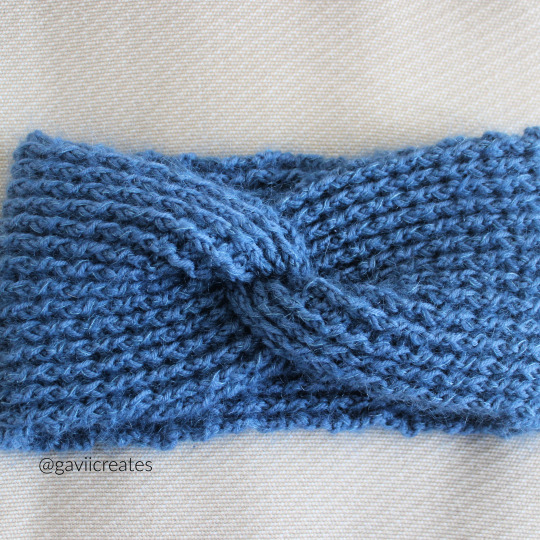
I'll keep it for winter. <3
In the end Mohair - would try again! I feel like there could be a definitely appeal to expand into more adventurous color combinations now that I've seen how the strands and colors work together. I can definitely see that rosewood color way with a different yarn that could completely transform the look. I get it, I definitely do. **I am new to this fiber journey**
#finished object#Yarn review#hobbii#hobbiifriends#mohair#extra fine merino#crochet#yarnblr#crocheting#winter accessories#Gavii Makes Stuff
8 notes
·
View notes
Text

4 notes
·
View notes
Text
so i have +10 cm wingspan compared to my height and this has made me realise there is a reason the arms on jumpers and jackets are always short
and the reason is me having freakishly long arms + slightly broader shoulders than what a size XS/S woman typically has
#exchanged xmas present that didn't fit for a merino jumper & the arms are fine but they ride up a LOT when i move#kinda want to make a joke about the clothing industry catering to only one type of body but also i don't wanna get jumped#bc i have exactly four (minor) issues where store sizes don't fit perfectly but like it's fine. i live with some extra wrinkles#or short arms or i take in the waist
1 note
·
View note
Text
Shop The Latest Collection Of Luxury Knitwear Australia
Luxury knitwear is clothing often made from high-quality materials designed to be comfortable and stylish. While Luxury Knitwear Australia is usually more expensive than other types of clothing, it can offer several advantages in function and aesthetic appeal.
Some of the functional benefits of luxury knitwear include its ability to keep you warm in cold weather and its breathability, which can help to keep you cool in warm weather. Luxury knitwear is also often very strong and durable, lasting longer than cheaper alternatives.

Regarding its aesthetic appeal, luxury knitwear can add a touch of class and sophistication to any outfit. It is available in various styles, from classic to contemporary, and can be a great way to make a fashion statement. Luxury knitwear is also often very comfortable to wear, making it an excellent choice for those who want to look good and feel good at the same time.
Luxury knitwear is a must-have in any fashion-savvy wardrobe, and Jemala is one of Australia's biggest producers of luxury knitwear. Their woollen knitwear gets ready of 100% Australian wool, which is renowned for its quality and warmth. And their warm silk knitwear is made from a blend of silk and wool, which is incredibly soft and cozy and has natural temperature-regulating properties. They also offer a range of customization options for their knitwear. Whether you want your initials embroidered on a hat or scarf, or a special message knit into a sweater, they can make it happen. To learn more about Knitwear Australia, contact them.
#sustainable fashion australia#sustainable men's sweaters#high quality silk fabric online#designer scarves for women australia#best mens online shopping australia#italian merino wool sweater#mens designer clothes online#women's luxury designer clothing#extra fine merino wool mens sweaters#women's fine merino wool sweaters#merino wool sweater womens
1 note
·
View note
Text
warmth
jamal musiala x reader (requested)
summary : with germanys elimination, jamal can only find comfort and reassurance within you.
warnings : none
daily click to help palestine




the scores tied with 1-1, wirtz scoring within the 89th minute. german fans cheered, finding hope in victory. your gaze hasn’t left jamal since the start of the game. smiling at yourself when he cheers on with his teammates, lightening up their mood.
unfortunately, this did not last long. it was extra time, scores still tied. fans from both teams start to get worried. within the 119th minute, merino from the spanish team kicked the ball, flying into the net. eyes widen from the crowd, relief and happiness in spanish fans but disappointment from the other.
it was already full-time, you cover your face with your hands from exhaustion. germany, the host, has lost. different emotions from each fan, even germans talking on how it was unfair in the stands.
honestly you couldn’t care less whether it wasn’t fair or not, you were more worried about jamal. you knew he would heartbroken, always going to the point in blaming himself. he wasn’t the type to get angry and aggresive, it would rather take a toll on his mental health instead.
players started to go back to the locker rooms, you followed shortly after. waiting outside, leaning against the wall on your back as your bag hang on both of your hands. some of his teammates has already passed by, assuring you that he’ll be right out.
you heard the locks open, your eyes darted from the ground to the doors. met with jamals freshly washed face, a smile but wasn’t fully filled with happiness. you softly smiled back, swiftly moving your bag to your shoulder as you embrace him in a hug.
although he wasn’t showing any signs of sadness, he broke down in the same arms once you two arrived in your rooms. you two laid in bed, white sheets tangled within your legs. jamal laid on your chest, silently exhausted from everything. you stroked his curls, patting his back.
“it wasn’t your fault, no one’s disappointed in you…”you said, barely louder than a whisper and a soft voice.
“yeah…” he responded, but more in a mumble. he tended not to go verbal in times of him drowning in melancholy.
“i’ll order us some food, and we’ll watch movie. sounds good?” you said, slowly getting up to look at his face properly. jamal smiles back and you took that as a yes.
you lightly push his arms off your waist, him responding in a whine. you ordered some drinks and snacks while making sure they fit right in his diet. turning on the tv while waiting for it to arrive.
“what movie do you want?” you asked, scrolling through the selections with the remote.
“you already know y/n.” he giggled
“white chicks it is…” you chuckle, white chicks has always been a comfort movie between you two. especially since it was a childhood movie growing up.
the food arrived right on time, you placed them on the table. jamal getting up with a large blanket, throwing it onto the couch. you two settling on the center, cuddling each other as the movie played. small and quiet laughs from time to time.
the ac blasting coldness in the room, almost freezing temperatures.
“i should lower down the ac…” you said. before getting up, jamal pulled you back down to the couch. cuddling way more closer to you. sharing your warmth with one another.
“it’s fine, you’re my human heater.” jamal said, nuzzling his nose on your neck.

a/n : this was short sorry 😓😓
offtopic but as a society are we reaaally gonna ignore how fine alejandro balde is 🙁🙁
#jamal musiala#jamal musiala x reader#jamal musiala imagine#football imagine#football x reader#footballer x reader#musiala x reader
245 notes
·
View notes
Text
Is it crazy to want to weave myself fabric for a walking skirt?
Just something I'm pondering while browsing colourmart.
#this is my life#hand weaving#project planning#i havent been able to weave for 2 years#because of shoulder pain
39 notes
·
View notes
Text
i really like seeing posts about how other people are processing their fibre, so i thought that i'd add ours. we bought a couple bags (about three kilos—this photo is only half) of raw fleece at sheep and wool, and now have it all washed out and cleaned up.
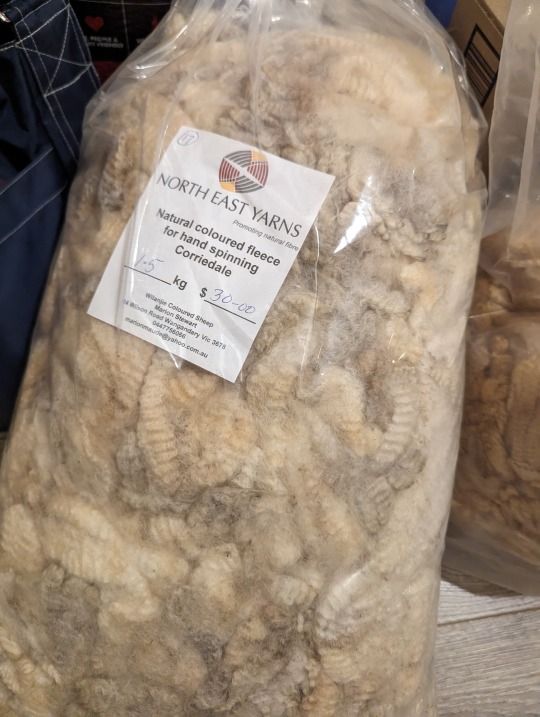

the most helpful boys in the world were very interested in what we were doing, and frankly far less suspicious of the large tub of water than i would've preferred for them to be.

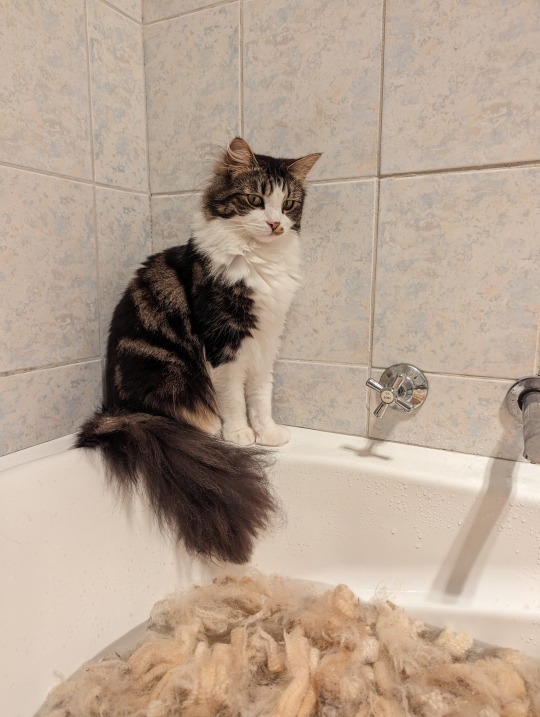

anyhow, about a kilo of fleece got dumped into the tub and arranged to be as aligned as possible. in future washes, i didn't bother with this and didn't find that there was much a difference, and certainly not sufficient difference to justify the time and effort spent carefully laying it out.
i imagine that this is different if you're washing a whole fleece and things are already more or less aligned. if you're washing a bag of of fleece that's just been plopped into the bag, i would suggest not bothering.
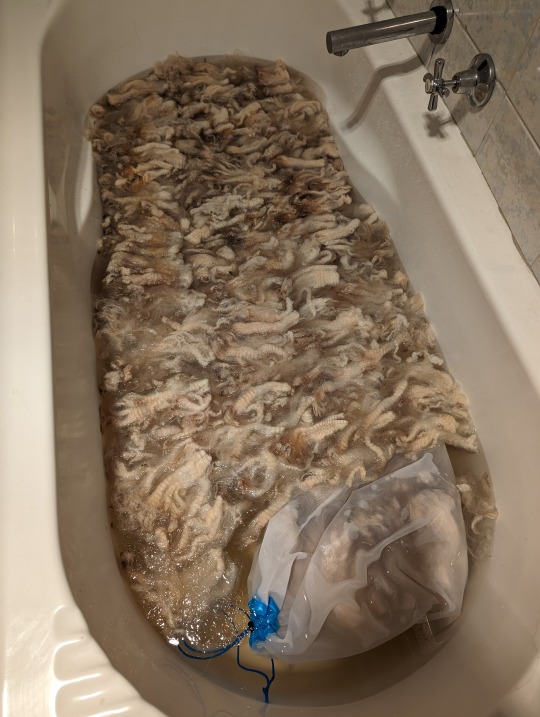
the small bag at the end were some locks that we'd picked ahead of time to see if they washed up nicer. (spoiler: they did not.)
worth noting is that we have one of those bathtubs that's short but deep, so this isn't as much water or space as it looks like.
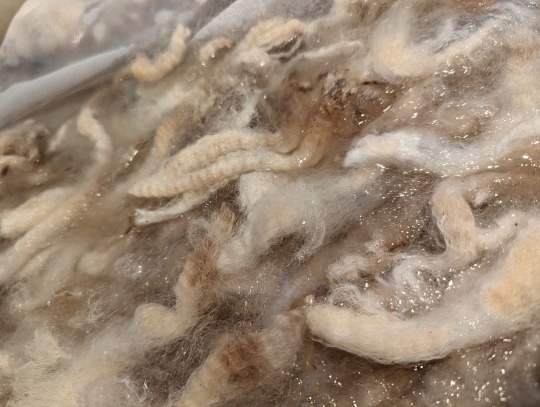
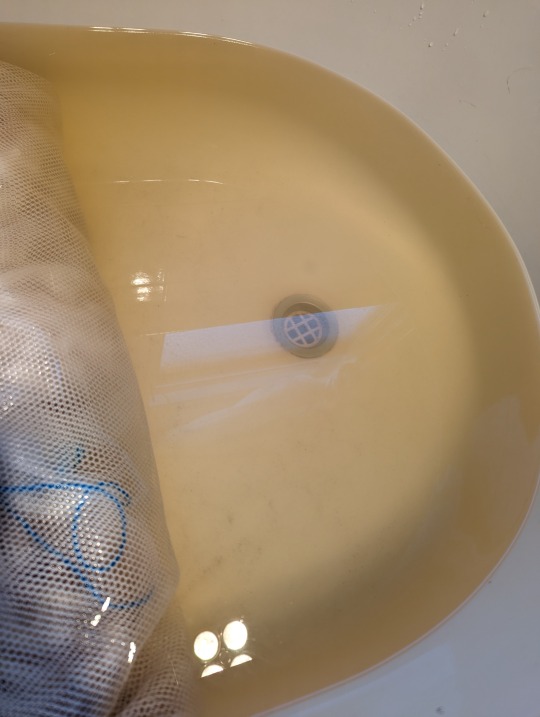
if you've ever wanted to see how water-resistant wool is, here's a great example. these photos were taken the next morning, and some of the fibre was still totally dry, despite having carefully pushed it all underwater before we headed to bed.
after about twelve hours of soaking, this is what we had—the water doesn't look that dirty in the second photo, but you can just barely see a cloud of dirt at the edge of the mesh bag we were using to hold the wool in place in the tub. (it was just laid on the bottom of the tub, and meant that we could easily move the wool up or down the tub, or lift it out entirely, without having to move it much.)
anyhow, soaking water from this batch went into a bucket to feed my wife's plants. (and then the next batch i fucked up and drained it. 🤡 it's amazing they put up with me, tbh.)
wool got moved safely away from the water, and then it was time for the hottest tap water we could manage. our tap runs at well over 60c/145f, so we didn't bother to try to make it any warmer. as it was, i was very grateful that we'd bought the extra heavy duty kitchen gloves.
we added a couple splurts of dishsoap (palmolive) to the tub, then carefully let the fleece spread itself out again, which doesn't take much encouragement, thankfully. and then we fucked off for a while.
twenty minutes later, the water looked like this.
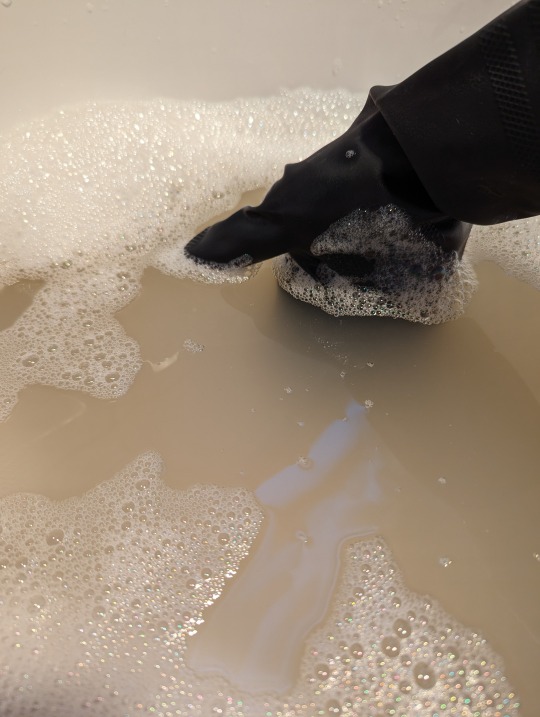
my hand's in the water to about my knuckles in that photo, and as you may notice, it very much appears that i have no fingers.
second wash. our friend the very large mesh laundry bag helped hold the fleece first away from the drain, and then from the tap, and we did it again just like the first wash.
another twenty minutes, and we had this.

you can almost believe that i've got fingers! progress!
this post offers a great look at what it looks like when lanolin is leaving a fleece. we have incredibly soft water, so most of their findings weren't especially relevant to our washing, but the visual guide is fantastic, especially since it took them so many changes to get things clean.
so again, drained, refilled, and resoaped, then left to sit for twenty minutes. and this time, i came back to this!

a whole entire hand! fingertips and everything! i was sort of surprised, honestly, since fine wools have a reputation for being really lanolin heavy, but after this batch of fleece i went down to two washes, and feel like it was more than sufficient for 90% of it. (there was a chunk of merino/bond cross in a later batch that was a little shorter and more lanolin heavy, and likely could've used a third wash, but i'm using that to make rolags and it's going fine, so whatever.)
anyhow, fleece clean! rinse time!
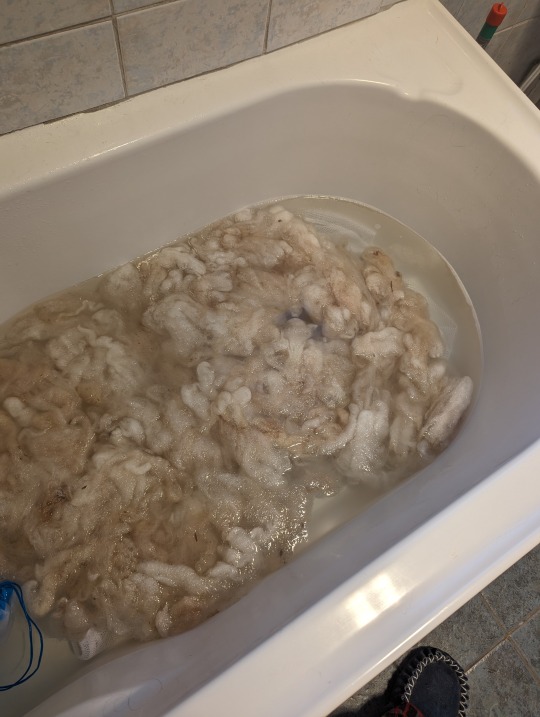
this looks like fleece in water, because that's what it is. we did two rinses, and that seemed plenty sufficient to get out all the suds.
next we spread it out as gently as possible onto a cheap sweater drying rack and hung it on a giant screw that's sort of inexplicably sticking sharp-end-out of the eaves of our porch. (and you'd be like 'that sounds normal, lots of people have screws or whatever to hang things,' to which i'd say 'it does! except that there are three of them and the placement is utterly bizarre, and this is the only one that you can hang anything from.' my best guess is christmas lights, but why a screw? why sharp side out? how sharp side out, at that?)
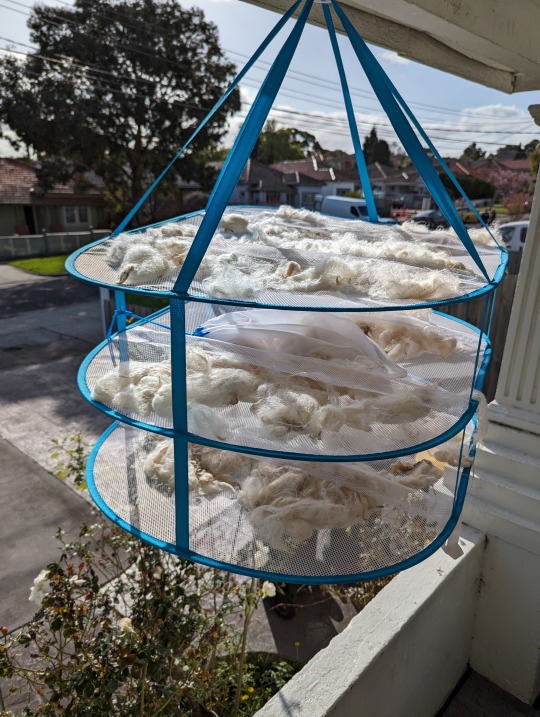
wool, drying! and the hated roses that have been blooming all fucking winter and are continuing to bloom and are getting bigger and now have spawned more roses somehow, and now we have a bunch of red roses, too. when we moved into this place a year and a half ago there were only white roses. we don't know where the red ones came from, nor do we know why the roses are suddenly VERY TALL—see how in this photo, they don't even clear the top of the wall? now they're like 50cm over it. eighteen inches over it. why. i hate them.
i will continue to hate them unless they become tall enough and self-support enough that they accidentally shade our office, in which case i will hate them slightly less but i'll be mad about it.

and now we're done! that's a lock of nice clean wool! all we did before this photo was fluff out the tips a bit.
i combed some out, and it's pretty good!
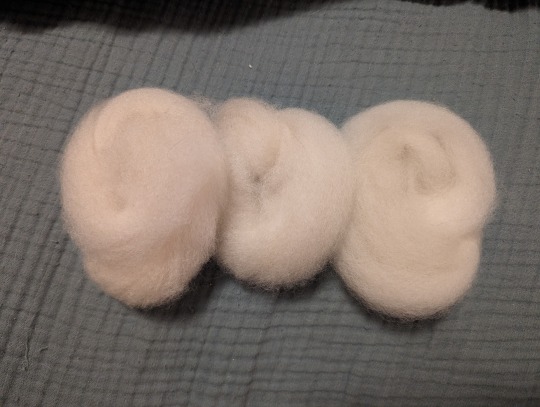
nice little nests of combed top. the wool's slightly different colours because, like i said, it wasn't a fleece, it was just fleece, if that makes sense, so there's a bit of a range of colouration in there. but there's much less loss than i'd expected, even combing it out, and all up this was a much easier and less miserable process than i'd feared it would be!
i've put off buying raw fleece for a long time, partly because i've mostly lived in apartments and haven't had a ton of space in which to wash it, and partly because i'm disabled and was afraid that doing it would be too much physically, but it turns out that i probably could have done this a lot sooner, and also that it's not really that hard on the body. the worst of it for me was bending over the tub to fill/refill and then get the wool onto the drying screen, which was a little rough, but definitely not so rough i wouldn't do it again.
(we then did this several more times to get all the fleece washed, and i can already tell you: we're gonna do it again.)
this is the first time i've done raw fleece that had lanolin in it, so please don't take this as an authoritative resource, but that's what we did, and it worked really well and was a lot easier than i'd feared, so i figured i'd share.
#spinning#handspinning#hand spinning#fibre processing#fiber processing#fibre prep#this was fantastic and i loved doing it#i'm very excited to see what we make with it#though i think a lot of this is going to be experiments with processing the washed fibre#but next year there will be even MORE fibre!!#i'm very excited
101 notes
·
View notes
Text

Done! Baby socks for my baby in Drops Merino Extra Fine.
The pattern is Dream in Blue.
11 notes
·
View notes
Text

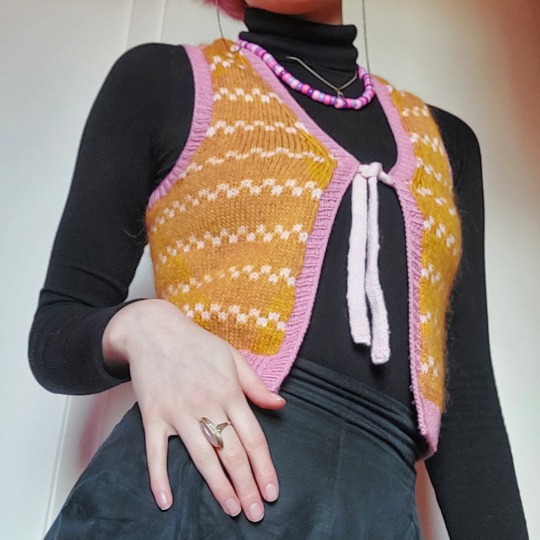

Another very varied vest by whatlydiamakes. I absolutely love it! 💖
Yarn:
Friends Extra Fine Merino Color 28
Drops Baby Merino Colors 05 & 07
23 notes
·
View notes
Note
Thoughts on veganism?
It's fine. Food is food.
At the grocery store, meat is 3x more expensive than tofu.
Jigsaw Farms in Australia is one of the most sustainable animal agriculture farms in the world. They recently discovered that even a sustainable operation hits carbon saturation after 10 years of animal agriculture. And I don't mean sustainable as an empty industry buzzword. I mean world-class sustainable agriculture recognized and monitored by ecologists. Just so you understand what that might look like, here's a description of Jigsaw:
The 3,378-hectare farm spans six titles, bought between 1996 and 2003. Hardwood timber plantations cover 295 hectares, 24 hectares is remnant forest and a further 268 hectares are set aside for biodiversity. It hosts a fine wool merino operation with about 20,000 ewes, and 550 head of cattle.
If you do absolutely everything right, you can sequester the carbon of animal agriculture for a decade. After that, no matter what you do, you will not be able to sequester more carbon than you produce. The land will be saturated.
I believe this discovery gives a road map for an ideal agricultural transition.
Let's say tomorrow the entire global animal agriculture industry, everyone from factory farms to family farms, decides to become Jigsaw. First, it would take about 5 years to transition the land and infrastructure. Then there would be about 10 years of sustainable animal agriculture. And I'll add an extra five years there to make it flexible. So that's 20 years. A 20 year transition. After that, we'll eat our last farmed animal products. And then there'd be tons of carbon-rich land that could be used for plant agriculture.
Unfortunately, humans haven't evolved a sustainable hivemind. We have massive variation in social behavior. So, with a transition like this, there will be early adopters, bandwagoners, and stragglers.
Now let's talk about fishing.
The fishing industry can theoretically be eternally sustainable. Large scale wild catch can go on forever. Farming shellfish can go on forever. Farming fish like salmon and cod is a massive ecological disaster but other forms of aquaculture are fine. We already know exactly how to run this industry in a 100% sustainable way. There's no mystery to it and all the technology is available. Unfortunately, in the fishing industry, we once again run into the problem of variation in human social behavior. There are both angels and devils who work on the ocean. And the devils are economically rewarded while the angels toil away and go bankrupt.
Sustainable food production methods are not profitable in our current economic system. It's impossible to make them profitable. Right now, there is only one way to make a profit in food production. You need to destroy the land and ocean and doom future generations to starvation. Basically, by stealing value from the future, you can make a profit and be wealthy in the present. Farmers in France have been viciously protesting for their right to steal from the future. Their government tried to regulate them into respecting the people of 2070s France. But they don't want to do it. Human variation in social behavior is very difficult to deal with.
And finally, there's hunting. Ecologically, we need hunters who are humans as well as the reintroduction and promotion of non-human predators. However, poachers and wildlife traffickers can destroy an ecosystem faster than any other industry. They can delete an entire species in less than a year. Hunting deer and rabbits is not profitable. Wildlife trafficking is extremely profitable. So once again, angels and devils and money.
7 notes
·
View notes
Text
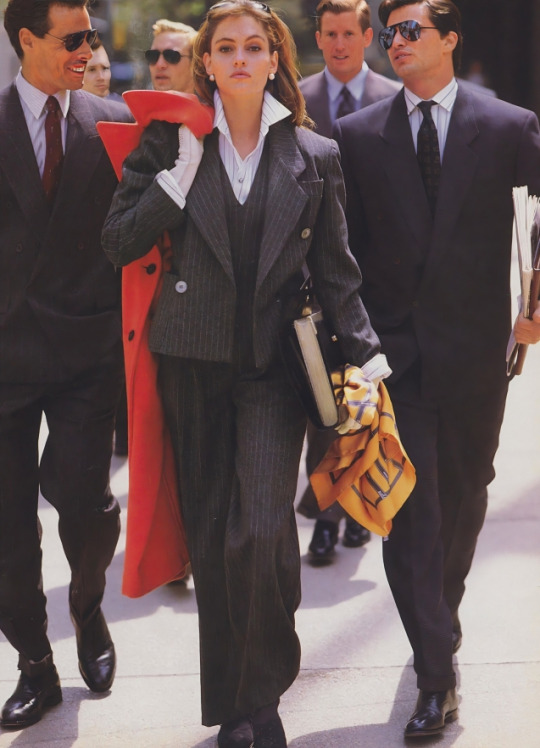
US Vogue August 1988
Masculine and feminine the banker stripe trouser suit in extra fine merino wool from Anglo Fabric. By Michael Kors. On the shoulder, the Patricia Dyne tangerine wool overcoat. Hairstyle Madeleine Cofano for Bruno Dessange, makeup, Glenn Marziali for Trish McEvoy.
Masculin féminin le tailleur pantalon à rayure banquier en laine mérinos extra fine d'Anglo Fabric. Par Michael Kors. Sur l'épaule, le pardessus en laine mandarine Patricia Dyne. Coiffure Madeleine Cofano pour Bruno Dessange, maquillage, Glenn Marziali pour Trish McEvoy.
Photo Patrick Demarchelier vogue archive
#us vogue#august 1988#fashion 80s#1988#fall/winter#automne/hiver#michael kors#patricia dyne#madeleine cofano#bruno dessange#glenn marziali#trish mcevoy#patrick demarchelier#mérinos#merino#anglo fabric#wool coat
28 notes
·
View notes
Text
FO: time flies by in the yellow and green...
...Stick around and you'll see what I mean
(there will also be more pictures under the cut)
Remember literally yesterday when I mentioned I was doing a stretchy bind-off purlwise, and I loved the fluidity of it? Well, obviously a bind off pretty much heralds the end of a project in sight so here we are. I was so eager for this one to be completed that I lightly washed the shawl and pinned it overnight so that, by today, I'd have my first finished, knitted shawl.
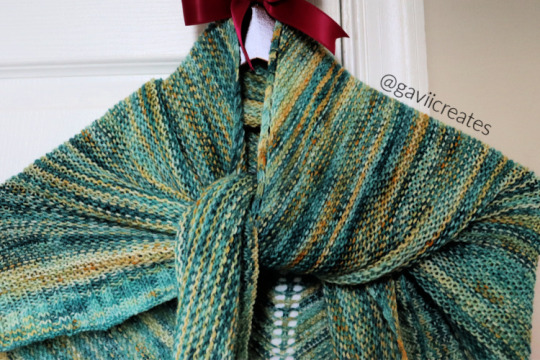
Pattern: Mara Shawl by Madelinetosh, available here through Ravelry
Yarn: Arcane Fibre Works, "Calm Waters" -80/20 Extra Fine Merino Nylon Super Wash Fingering Weight. (2 Skeins)
Tools: Clover Takumi Bamboo Circulars - US 5 3.75mm, Eucalan Lavender Wash for blocking
This shawl is a garter stitch shawl with yarn overs down the center and sides to both increase and add a bit of lacy interest. I had actually started on this before I finished the throw blanket, so these two pieces together were so critical for my knitting journey thus far, and I've learned so much already.
While the throw maintained the upward structure of its rows, this shawl gave me the experience of increasing along the center and sides, working outward as well as up. Once I figured out the yarn-over and the cadence from row to row, the location of the yarn-overs was easy to remember. Simple, but elegant on the piece. It did take me a few rows in to figure out that a stitch marker for the RS vs WS would probably be helpful, and from there it was smooth sailing.
Almost too smooth, because I just kept going. I don't remember the cord size I used, but eventually working the stitches scrunched up on the needles, and the work curled into itself. Once that started, I had a hard time imagining what it would look like finished. I had no idea what the shaping would look like once it was off the needles, so my plan was to hope I just figured out when would be a good time to stop. Low stakes winging it, if you will.

She's big. This is no shawlette you behold. The length surpasses my wingspan on both sides, and the drape down the back is lovely and full while the fabric itself is light and breathable between the stitches. I think because the needles were a bit bigger than recommended size for fingering weight, this resulted in some space between the stitches.
I'm dreaming of that first cool day of fall, and wrapping myself up with her covering my shoulders pinned with a nice brooch, or rolled into a scarf around my neck over denim. She's going to be a wonderful addition to my wardrobe, and I am ecstatic with the final length and look.
I mentioned above I used two skeins. Another learning curve for me - one I intentionally played with here - was the way the colors fell. I don't think it's a crochet thing specifically because I know opinions still vary, but coming from a craft that tends to create potentially less ordered fabrics with variegated yarns, I'm kind of open to color pooling at times. It's not for everyone, but I think there's a fun little magic in letting the colors land the way they want to in both crafts it seems.
I started with one skein, then switched to alternating after a while to learn that technique, then ended with one skein again as I finished out the project. I was nervous about this choice, especially as I started seeing entire blocks of yellow forming. But in the final garment, I don't feel like these larger streaks take away from the color combination. I'm loving that it's not uniform and there's a bit of fun and randomness to how the colors fall.

Towards the final rows, the pattern switched from garter to 1x1, then 2x2 ribbing, which I could see being a great opportunity to switch out to another color to complement. But I really wanted to have my yellow and green shawl, so I decided to keep working up with the same yarn. Plus I am kind of in love with seeing how different stitches create a new texture that gives the colors in a variegated yarn a bit of a different life to them.
Now - I do have one more skein of this colorway, as I had bought a just-in-case extra. I am thinking my big shawl needs a little something else to go with it - maybe a hat or some fingerless gloves, oooh! or some socks.
Now, I have... how many more months till I can wear this?
60 notes
·
View notes
Text
Tonight's spinning group christmas meetup was such a great experience. We played a spinning game where everyone brings a small amont (about 50g) of fibres from their stash and then someone throws a dice and the fibre gets passed around the number of seats the dice shows. Then another dice throw to determine the minutes everyone spins the fibres in their hands. We were 11 people so it was a nice assortment of different fibres. I spun from a carded batt for the first time, I spun some still quite dirty alpace for the first time and I spun some reeeeally short fibres for the first time on my wheel. Some baby wool... idk no longer than 3 cm I guess. I got a very colourful single which I will chain ply tomorrow.
And we had a secret santa. Everyone was asked to take about 100g ready-to-spin fibres from their stash so no extra money will be spent, and everyone knows fibre artists are hoarders and will find sth. I gave away some pretty red and black ultra fine Merino and received a lovely grey mystery-probably-mohair fibre. It was really fun. Tomorrow will be another rest day though. No spindle turning, no nalbinding... pictures follow tomorrow as well
8 notes
·
View notes
Text
Today's fiber arts update: Guardy goes *AAAAA* about spinning tools.
I'm working on the third single of that merino yarn I'm making, and that leaves me with ample time to think - in this case about my wheel, and how it's simultaneously nearly perfect and a huge pain.
I love my wheel. It is small, it is a perfect combination of form and function, it is very familiar to me, and it cost me 40$. I love spinning on it.
But that 6:1 fixed ratio is a nightmare.
So sometimes I dream of a 14:1 wheel, leisurely spinning fine singles with some flavor of long draw, knowing that I'll get a yarn that'll hold together without having to treadle like I'm trying to set a speed record.
I'm gonna earn myself some extra money over the course of the holiday season, and I do want to put some of that into my hobbies, but I still neither have the extra space nor budget for an entire second wheel - and getting new parts made for old wheels is a complicated thing and I have no idea if I could even find someone to do that within Germany.
There isn't really a point to this aside from me being annoyed that my wheel limits my spinning speed so much.
#guardy's fiber arts tag#hand spinning#I can't even find a wheel model I'd *want*#it'd have to be a castle-style wheel with a wide variety of whorls and flyers available#a double drive wheel#but single-treadle#and decently small#and not too expensive#so basically#my wheel with a different ratio#:')
12 notes
·
View notes
Text
Knitting progress update!

The Handsome Chris Pullover was dragging, so I switched to a new, quicker project. Also lets me practise knitting two things at the same time, which I'll need for the sleeves of the pullover, so!
Pattern is:
(Do I knit a lot of drops patterns? Yes, I do. They're free. I have like less than 100 Euros income at the moment. Also, they've got all the instruction videos, : ) )
13 notes
·
View notes
Text
How Yarn is Made from Plastic Bottles + Video Demonstrations
In 2023, we had an introduction to one of the stitch-alongs with our friends at Jimmy Beans Wool. The crochet blankets were available in two different formats. First was the Metropolis version, which was 75% Extra Fine Merino wool and 25% Nylon, but the other was called Scrumptious, which was 50% recycled bottles and 50% acrylic. Take All The Ribbons Crochet Along It’s 2024, and humans produce…
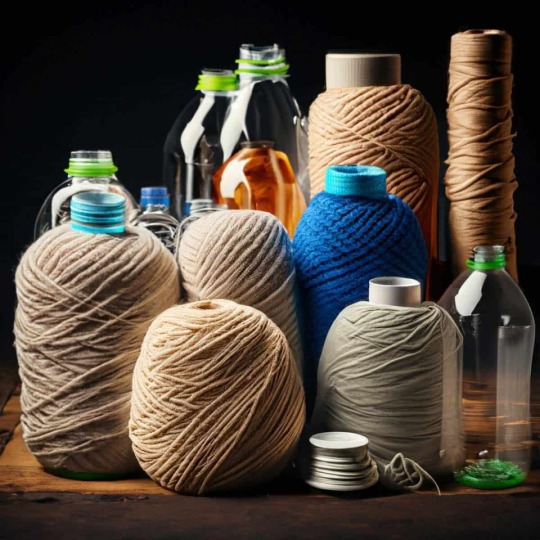
View On WordPress
3 notes
·
View notes